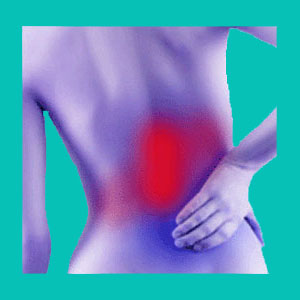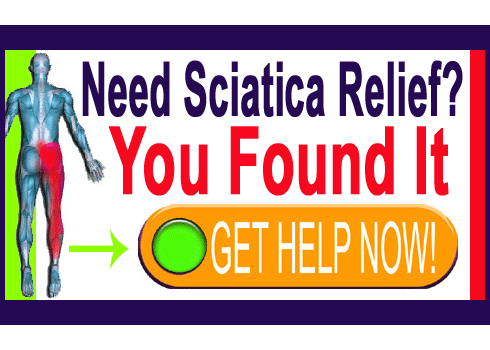
Combined care for herniated discs uses a multidisciplinary approach to back or neck pain treatment. Combined care might provide a number of benefits to disc pain patients, including reducing reliance on more dangerous methods of therapy, such as pharmaceutical or injection-based care. Some patients use combined care to successfully avoid surgical intervention in the short term or even in the long run.
Combined care can be highly effective for some patients, but the practice is not entirely positive when viewed from an objective viewpoint. There are also downsides of combined care to consider and these might prove to be substantial hurdles for some patients to overcome.
This essay discusses combined care protocols for herniated disc treatment. We will explain combined care for herniated discs and detail its benefits and downsides to provide a truthful view of its overall efficacy, safety and value.
What is Combined Care for Herniated Discs?
What is combined care and how can it be utilized to treat a herniated spinal disc? Combined care is defined as using an assortment of medical, complementary and alternative care regimens together to achieve pain relief. Patients can choose to focus on particular treatments or may use a wide range of therapies from the traditional medical sector, the complementary medical sector or the alternative healthcare sector.
Combined care can be custom-tailored to suit each patient’s needs and exact pain profile. The components of the care plan can be easily adjusted or changed based on positive or negative results. To simplify treatment, many patients attend sessions at interdisciplinary practices where many therapies are offered under one roof. Other patients choose to select each care provider independently and do not mind the extra work necessary to travel regularly for each therapy session.
Rarely is one therapy deemed to be primary under combined care. Instead, each treatment has a part to play in the overall care plan. Patients may utilize the services of a physician or chiropractor to oversee their treatment or they might manage their therapy themselves, deciding on the best course of progress based on previous outcomes from their chosen healing arts and sciences.
In essence, combined therapy is the use of multiple types of healthcare to target and treat the same diagnosis. In this case, the diagnosed condition is a herniated disc. Let’s move forward and look at some of the most common types of combined care modalities used for intervertebral herniation.
Varieties of Combined Care for Disc Pain
Virtually any type of treatment can be part of a combined care program. However, the most commonly used therapies are noninvasive in nature and are geared towards symptom management, rather than curative efficacy. To put it simply, few, if any, treatments are designed to actually resolve the herniated disc structurally. Instead, they are meant to diminish the symptoms and the effects of symptoms on the patient’s life and functionality.
Traditional medical contributions to combined care usually include physical therapy and pharmaceutical therapy. Some patients might also include epidural injections in their treatment plan. While physical therapy is a perfect choice, we highly discourage the use of dangerous drug therapies and reserve epidural recommendations for patients who are definitively suffering from chemical radiculitis.
Complementary medical modalities compose the majority of combined care practices. These include chiropractic, massage, acupuncture, TENS, Alexander Technique, TCM, Ayurveda and ultrasound, among others. Spinal decompression breaks the mold here by offering a curative possibility for many patients, rather than ongoing symptom-based care.
Alternative approaches to care might include such methods as reiki, reflexology, hypnotherapy, EFT, prolotherapy, meditation, coaching and knowledge therapy.
Benefits and Risks of Combined Care for Herniated Discs
Combined care can be markedly more effective for some patients and some conditions when compared to singular therapy regimens. A quality combined care program might allow patients to manage their symptoms indefinitely without the use of drugs or surgery. Some rare combined care programs might also actually resolve the disc issue or at least cure the symptoms without continuing care. However, most programs require maintenance visits in order to remain effective.
We tend to recommend choosing treatments that have specific goals in mind. Acupuncture, physical therapy, massage and chiropractic are some of the best choices when it comes to combined care. We also typically recommend integrating some form of knowledge therapy into the program to deal with the negative mindbody influences of the herniated disc diagnosis. In many cases where patients adopt a mindbody therapy, the painful condition is completely resolved as the patient eventually learns that the true source of pain is not the disc itself, but instead is the conditioning process surrounding the diagnosis.
The primary downside to combined care is the financial cost. More treatments with more providers add up to a large bill at the end of each month. If health insurance pays the balance, then this is not a factor, but many methods of care enjoy only partial coverage or do not enjoy any coverage at all under traditional policies. The other major downside to most combined care is that the goal of therapy is virtually always to reduce symptoms, rather than resolve the underlying cause of pain. Some patients might be much better off seeking curative care in the form of surgery or nonsurgical decompression, since these approaches are finite in duration and might lead to lasting relief.
Herniated Disc > Herniated Disc Relief > Combined Care for Herniated Discs





